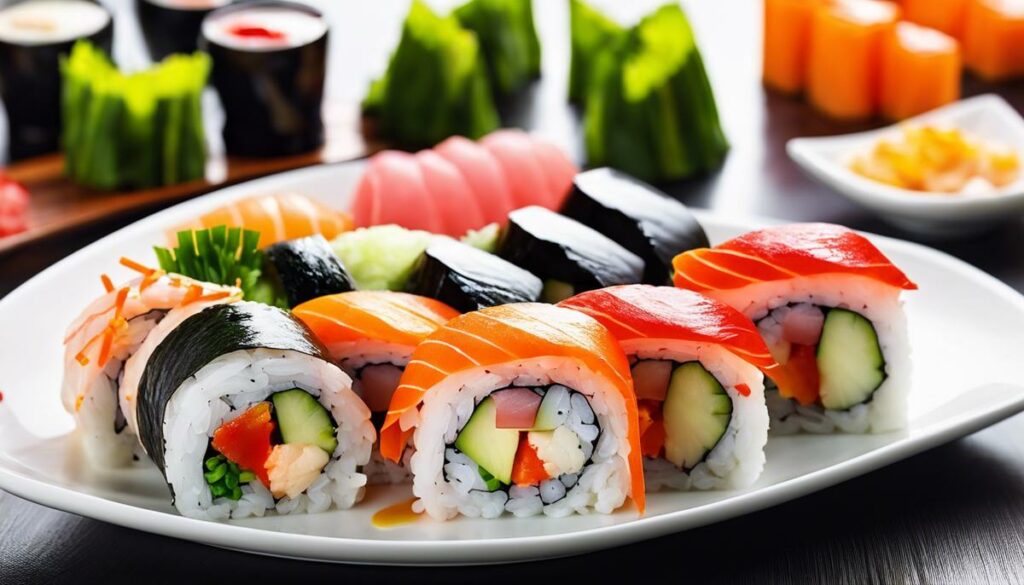Japan, the country where tradition and innovation meet, is known far beyond its borders for its sushi culture. But sushi is not the same everywhere in Japan – there are multi-layered “sushi dialects”, shaped by regional peculiarities and peculiarities. In the Land of the Rising Sun, the endless variations of this culinary artistry reflect not only the variety of seafood and ingredients available, but also the deep-rooted traditions and cultural nuances of the different prefectures. Exploring the variety of Japanese sushi takes us on an exciting journey through the flavors and techniques that make each region unique.
Sushi Dialects: Regional Differences
Hello dear lifestyle enthusiasts
It’s no secret that food is more than just food – it’s a lifestyle, an art form, and a love letter to culture and tradition. And when it comes to the exquisite world of sushi, the region in which it is prepared plays a central role. For foodies and anyone who enjoys life to the fullest, taking a deeper look at regional sushi in Japan is an absolute must.
When the conversation turns to sushi, some people dream of the bustling fish markets in Tokyo or a hidden sushi bar in Kyoto. But what exactly makes regional sushi so special?
First of all, each region in Japan has its own approach to unique seafood, resulting in different specialties and flavors. Fugu (puffer fish) from Shimonoseki, where expert chefs serve this infamous deli fish with surgical precision, is just one example of regional charm.
But it’s not just about the ingredients. Traditional techniques that have been preserved over generations are just as important. In small coastal towns, sushi lovers can enjoy authentic experiences by watching the masters wield their knives with an elegance that makes any sushi creation a masterpiece.
Take Hokkaido, with its lush, cool waters – here you’ll find Ikura (salmon caviar) and Uni (sea urchin), of a freshness you won’t find anywhere else. Or Aichi Prefecture, home of Hitsumabushi, grilled eel on rice, served in the finest slices and enjoyed in a variety of ways.
The aesthetics of sushi should also not be underestimated. Presentation is crucial to the experience, with delicately arranged platters that delight the eye and make the palate curious.
As true lifestyle purists, we know that sushi is more than just a trend – it’s a philosophy, a glimpse into a culture that combines aesthetics and taste in a unique way. It reflects the connection with the environment and testifies to respect and dedication to craftsmanship. So, experiencing regional sushi in Japan isn’t just food – it’s a deep dive into a world where every bite counts.
Striving for a lifestyle that prioritizes beauty and enjoyment means appreciating these nuances and taking an interest in the stories behind what we consume. Regional sushi is a perfect example of the power of place and the art of food, offering us a feast of joy for all the senses.
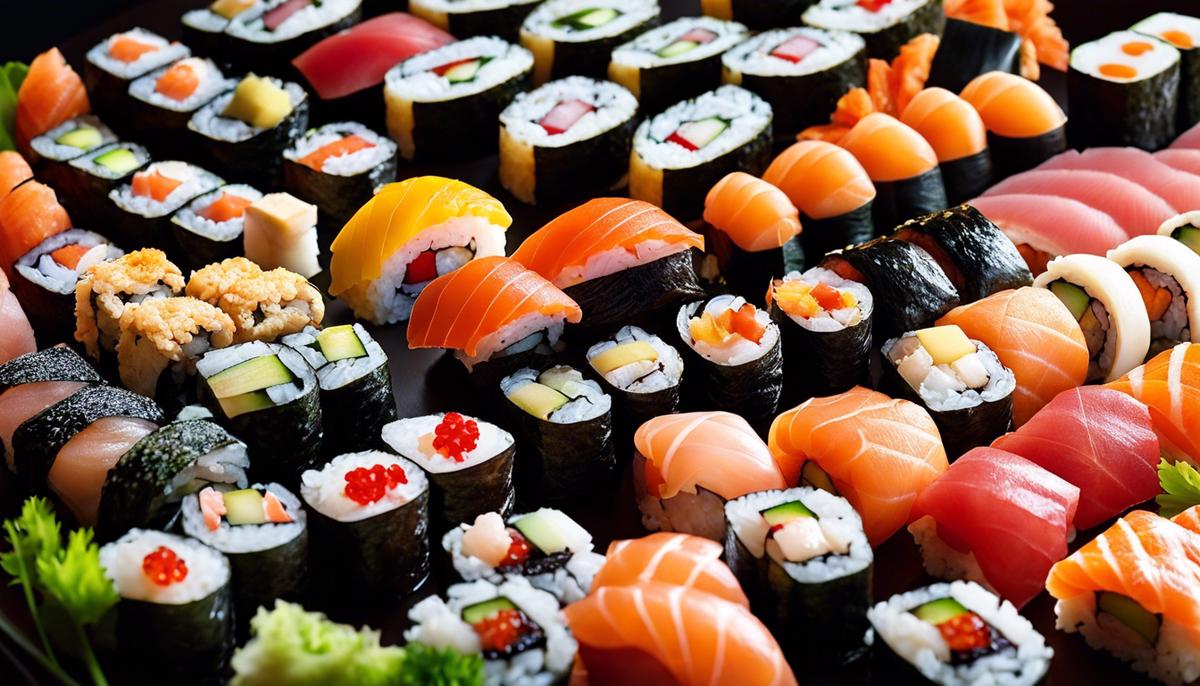
Famous regional sushi creations
Let’s dive into the world of Japan’s regional sushi variations – these culinary gems that are so much more than just a meal. Each region brings its own unique flairs and secrets to the mats of the sushi masters, making the range of flavors endlessly diverse.
Hokkaido, for example, celebrates the freshest seafood that comes straight from the cold waters. Here, the local kani sushi, a delicacy with tender crab meat, is an absolute must for palates who love and appreciate the sea.
Moving further south, we pass Osaka, where the Osaka style of press sushi, known as “oshi-zushi“, enters the stage. Pressed into shapes and often refined with mackerel or prawns, it fascinates with compact elegance and intense enjoyment.
In Tokyo, the heart of Japan and a melting pot of innovation, the world-famous “Edomae Sushi” awaits those looking for the best of the best. With a focus on nigiri – small rice balls topped with the finest slices of fish – it reflects the essence of the Edo period and spoils with pure sophistication.
Kyushu, famous for its hot springs, shines with the “Bara-Zushi“, a colorful and cheerful feast where the fish and vegetables are sprinkled over the rice in an elaborate arrangement – a feast for the eyes and a treat for the palate at the same time.
Another highlight is Aichi Prefecture with its “hitsumabushi“, a grilled eel that is placed wafer-thin over the rice – a delicacy characterized by a crispy crust and buttery smooth interior.
These regional sushi specialties are not only culinary expertise, but also a colorful mosaic of Japanese history and culture. They offer insights into local traditions and the creative development of old masterpieces. They tell stories of seas and rivers, of craftsmanship and devotion, and bridge the gap between past and present.
Whether enjoyed as part of a dazzling event or as a silent meal on its own, sushi in its regional forms always remains a dance of flavours. It’s a reflection of Japan’s abundance, cultural depth, and never-ending pursuit of beauty that encompasses not just sushi, but all of life. Sushi is much more than food – it’s an ode to life itself.
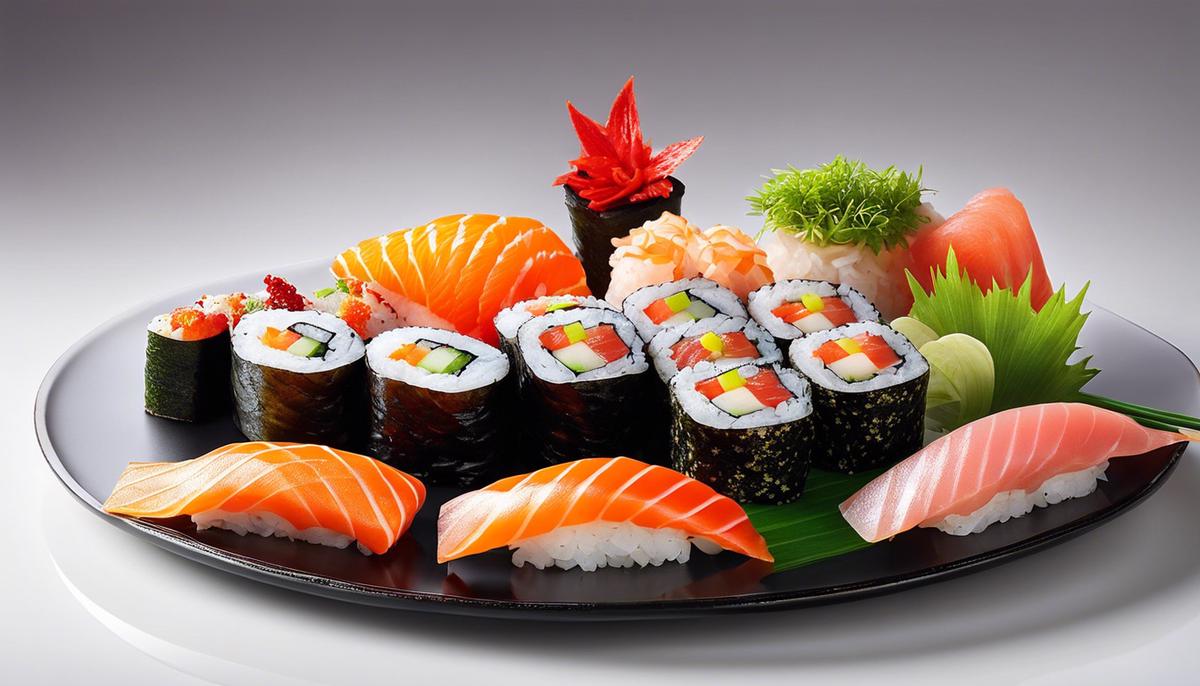
Modern influences on traditional sushi forms
Fusion inspires reinvention in the sushi cosmos
When someone uses the word “tradition”, their imagination immediately heats up! But in today’s world of endless possibilities, contemporary trends are actually adding fresh splashes of color to the sushi scene. The traditional sushi variations are an inspiration for creative minds who want to push the boundaries of classic flavors and textures.
Imagine: Sushi, but make it “globally inspired”! Chefs around the world are experimenting with ingredients that were once unthinkably associated with sushi. Quinoa instead of rice? Why not! Sushi donuts, burritos, and even sushi pizza capture the imagination. These reinterpretations are not only eye-catching, but often a revelation of taste.
However, playing with ingredients is not the only thing that happens in trendy kitchens. Plant-based sushi is also gaining more and more followers. Avocado, sweet potato and pickled pumpkin are conquering the sushi plate and offer a delicious alternative for the growing number of vegans and vegetarians.
“Instagrammability” also plays a huge role. Have you forgotten that the eye eats with you? Certainly not, at the sight of artfully arranged sushi creations that are almost made to be shared on social media. Here, sushi platters become a canvas for creative expression, in line with the motto: “You are what you eat – and most importantly, how it looks!”
The fusion of different cuisines also gives rise to culinary crossovers – when the pungent flavours of Mexico meet the subtle nuances of Japan or Italian classics such as tomato and basil set new accents in sushi. The joy of experimentation is boundless and gives the traditional craft an avant-garde freshness.
The result? A new era of sushi that highlights individual lifestyle and personality. So, why not leave the usual behind and let yourself be inspired by the flood of new sushi variations? Ultimately, it is the perfect symbiosis of respect for tradition and the joy of innovation that continues to redefine the sushi horizon. Let yourself be carried away into a world where the next taste sensations are only a roll away.
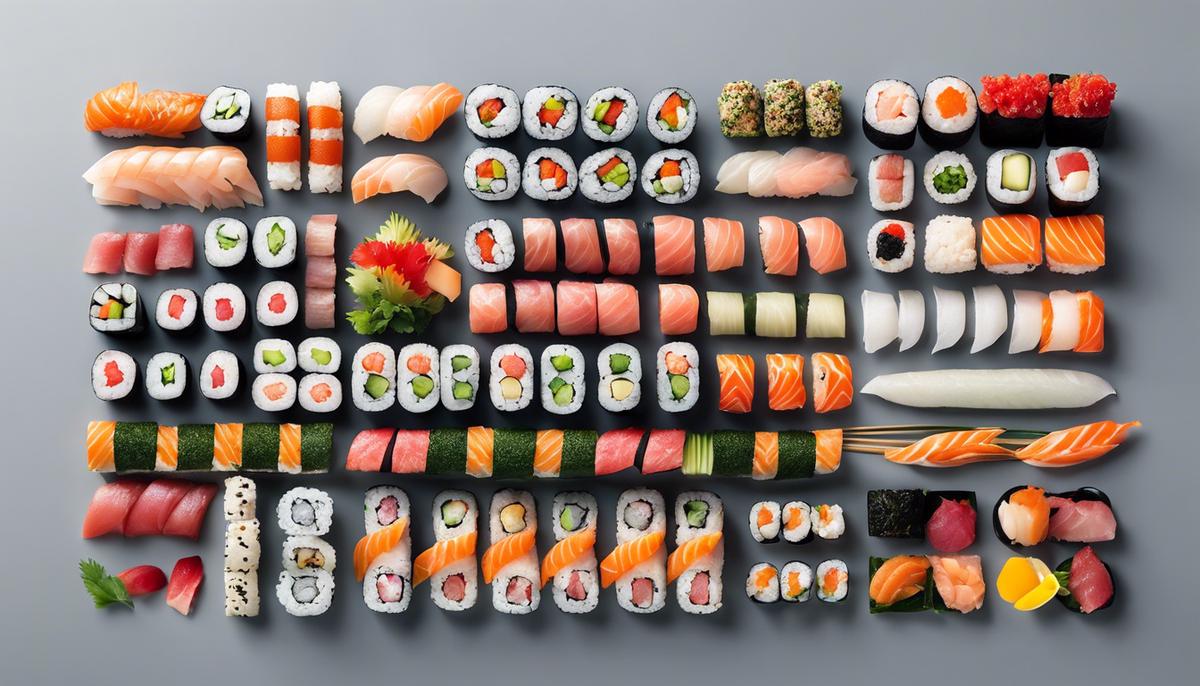
The Art of Sushi Preparation and Presentation
In the world of sushi, innovations are constantly taking place that push the boundaries of the known. Fusion-inspired creations break with convention and offer a variety of flavours that will satisfy even the most
die-hard Sushi connoisseurs surprised. These modern interpretations bring together elements from different cultures to create a completely new experience.
Experiments with unusual ingredients, such as exotic fruits or rare spices, allow traditional sushi to appear in a new light. These ingredients expand the horizons of what is possible on the sushi mat, providing not only an explosion of flavor but also a visual seduction.
A notable development in the sushi world is the emergence of plant-based sushi. This vegan option has not only conquered gastronomy, but also represents a sustainable alternative for those who value eco-friendly food. Plant-based Sushi also shows that creativity knows no bounds when it comes to sushi preparation and that there is something for every taste.
Social media is playing an increasingly important role in the spread of the contemporary sushi scene. On platforms like Instagram and Pinterest, sushi creations are not only shared, but also flaunted, drawing attention to the artful presentation. These platforms have created a new era of sushi influencers and trends that are influencing the dining experience.
Culinary crossovers are evident in the fusion of Western cuisines with the Japanese sushi tradition. Such hybrids are the result of an increasingly globalized world and the desire to connect different palates. From sushi burritos to sushi pizza, there are numerous examples of how cultural boundaries can be crossed on the plate.
Finally, the balance between tradition and innovation in sushi craftsmanship is essential. While the essence of sushi lies in the simplicity and freshness of the ingredients, as well as the masterful skill of the sushi chef, innovation allows for playing with new tastes and presentations. The future of sushi seems limitless, and it’s clear that it will continue to inspire and enchant the world as a culinary art form.
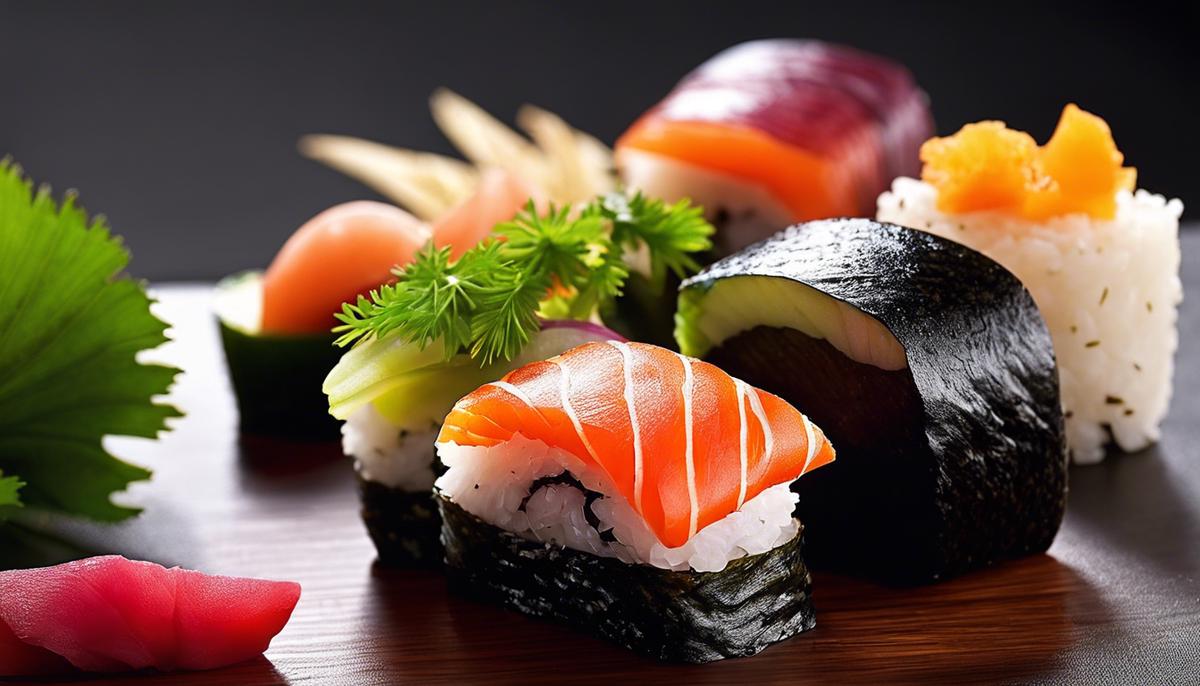
Seasonality and its influence on regional sushi
Seasonality in Japan determines much more than just the weather; it also shapes the country’s culinary delights — especially sushi. Although many aspects of Japanese sushi art are already covered, there are other fascinating facets to discover, such as the dependence of sushi on the seasons.
In the world of sushi, each season is celebrated by favoring different types of fish at different times of the year. In winter, for example, the rich, fatty fish is tempting, defying the cold temperatures and offering a warming, satisfying meal. Just think of the buttery texture of the buri (yellowtail), which reaches the peak of its flavor during these months.
With spring, on the other hand, lighter, fresher ingredients are on the plates. The shiromi, a white-fleshed fish, and the renowned sakura masu, the cherry blossom trout, reflect the refreshing breeze of the new season.
Summer is marked by abundant supply, especially in coastal regions, where the variety of fish is almost unsurpassed. Aji (horse mackerel) or iwashi (sardines) are often found in summer dishes, as they taste particularly delicious at this time of year.
Autumn heralds the time for fish such as Sanma (Pacific mackerel) and Saba (mackerel). They represent the transition to cooler days and are known for their deep, full flavors.
What began as a simple meal for the working class has become a worldwide phenomenon. If seasonality is the backbone of the sushi tradition, innovation and a tribute to nature are the pillars of its constant evolution.
The wonder of seasonality is evident not only in the taste, but also in the craftsmanship with which sushi masters pay homage to the changing seasons. This artistry of adaptation keeps tradition alive while cultivating a timeless lifestyle that celebrates the beauty of change, abundance, and sustainable practices.
To cut a long story short, sushi is more than food — it’s an annual cycle that brings the beauty of nature to the table, highlighting Japan’s devotion to quality and seasonal flavors. With every bite, a piece of living tradition is celebrated—a tradition that takes hearts by storm around the world.

Far more than a rolled-up delicacy, sushi reflects Japan’s attachment to nature and culture in every bite. The deep dedication to perfection, the play with seasonality and regional specialties make the sushi experience extremely dynamic and multi-layered. While the art of sushi preparation and presentation is in a constant state of change, the heart remains unchanged: a culinary delight that combines Japanese aesthetics, understanding of nature and culinary heritage in equal measure in its simplicity and richness, celebrating attention to detail and tradition with every piece.
